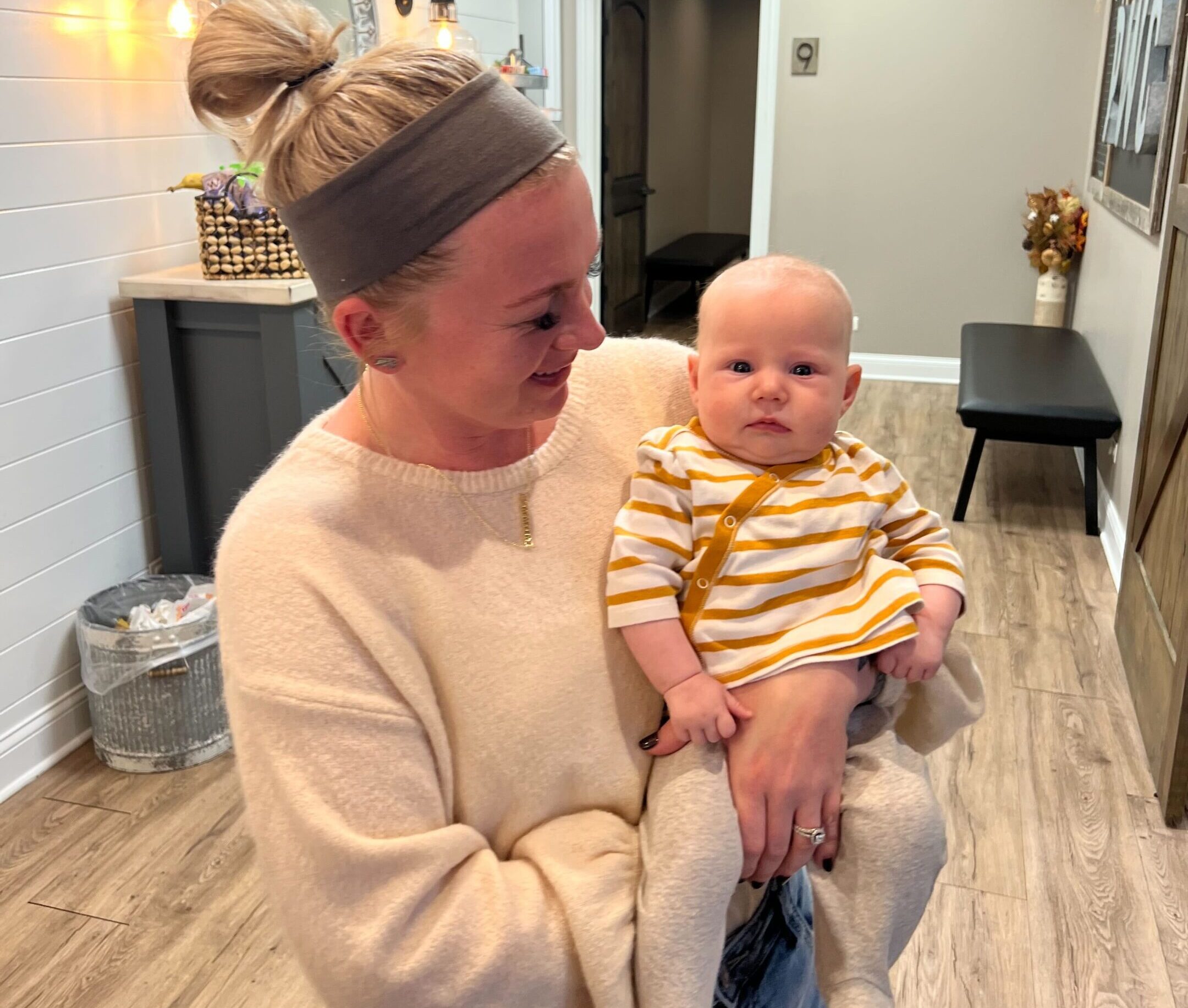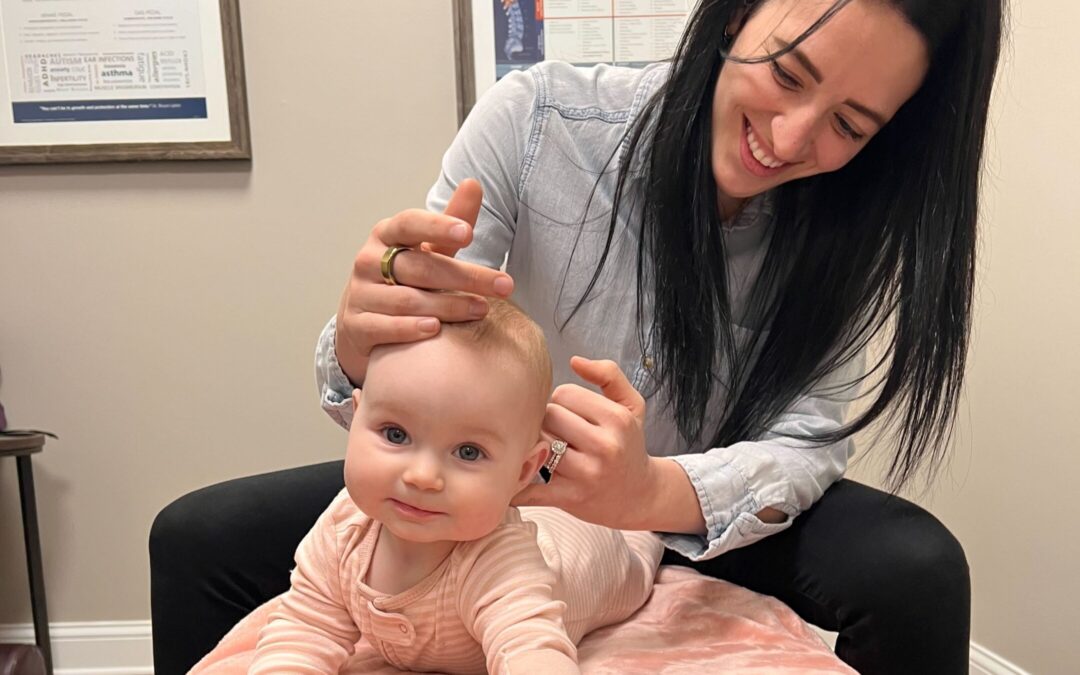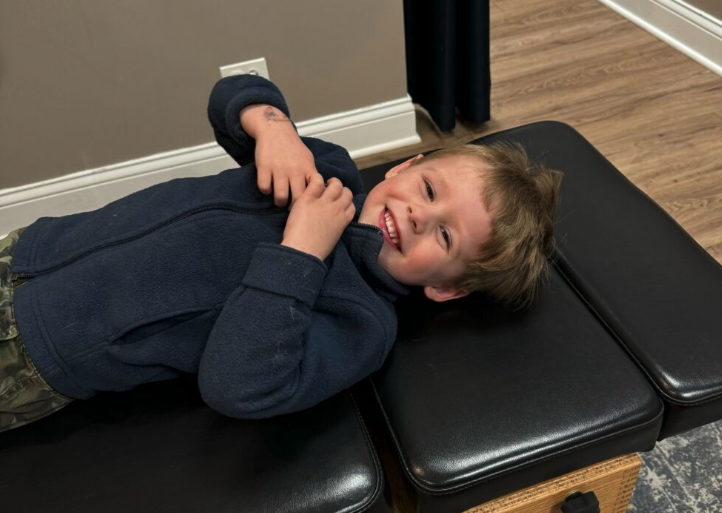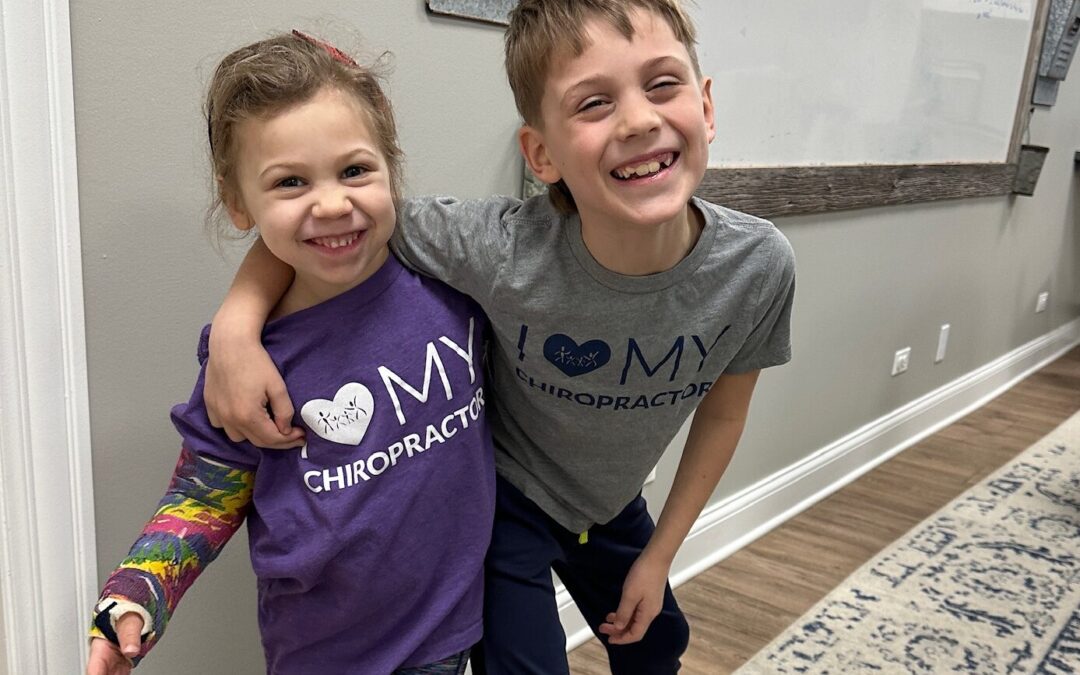Imagine being a new parent and receiving the heartbreaking news that your precious one-week-old baby needs to be assessed for infantile spasms. This was the case for Braxton’s mom, and she felt devastated, anxious, and overwhelmed when she heard this news. Her precious baby boy was experiencing distressing spasms whenever he lay on his back, making it necessary to keep him upright and under constant supervision, even during sleep and diaper changes.
They consulted multiple neurological specialists who predicted that the spasms might worsen, and the next step would involve an EEG brain scan at the hospital. However, due to a 4-week wait that delayed their visit to the hospital, in the meantime, they found Neurologically-Focused Chiropractic Care.
Traditional medical doctors will inform parents, like Braxton’s mom, that children who struggle with infantile spasms are at much higher risk of developing epilepsy, autism, and developmental delays later on in life. Most traditional websites and resource centers estimate that 80% of infants who go through infantile spasms will have some form of developmental challenges or neurological conditions like epilepsy later in life.
With this article, we seek to not only provide parents with an in-depth understanding of infantile spasms, their symptoms, and traditional medical treatment options, but we’ll also explore the root cause of infantile spasms and walk you through all natural and supportive care options as well.
Do not give up hope, moms and dads, and don’t just seek out a singular medical opinion or prognosis for your child. Over my 15+ years of clinical experience, we’ve been able to see some incredible results with children struggling with spasms, and many of them are living developmentally normal lives now today!
Brief Overview of Infantile Spasms (IS)
Infantile Spasms, or West Syndrome, is a rare form of epilepsy that primarily affects infants, most commonly between 4 and 8 months of age. These seizures manifest as brief, sudden movements or “spasms,” which can occur upon waking or falling asleep. During an episode, a child may bend forward or arch their back while their arms and legs stiffen. Understanding this condition is crucial because early diagnosis and treatment are paramount for improving the child’s prognosis and overall quality of life.
Importance of Understanding Infantile Spasms
Understanding these spasms is of utmost importance for parents and caregivers, as it helps in recognizing the signs, seeking timely medical intervention, and providing the necessary care and support. Often, the symptoms of infantile spasms can be mistaken for colic or reflux, which interestingly has a strong correlation and shared neurophysiological causative pathway we’ll explore later on in the article.
By getting a full understanding of this condition, you can empower yourself to make informed decisions regarding your child’s health and well-being going forward.
Understanding Infantile Spasms
Definition of Infantile Spasms
Infantile Spasms, also known as West Syndrome, is a rare and severe form of epilepsy that predominantly affects infants. Here’s what you need to know about it:
Characteristics of Infantile Spasms:
- Age of Onset: Typically, IS emerges between 4 and 8 months of age.
- Spasms: The condition is characterized by sudden and brief movements or “spasms.” These spasms can be so subtle that they may go unnoticed.
- Physical Manifestations: During an episode, the child may bend forward, arch their back, and stiffen their arms and legs.
- Developmental Impact: Infantile spasms can hinder both mental and physical development, emphasizing the need for early diagnosis and intervention.
History and Research Background
Understanding the history and research behind infantile spasms can provide valuable context. While medical researchers continue to gather more insights into the condition, we will speak primarily to the clinical observations and experiences we’ve seen caring for a significant number of children struggling with infantile spasms.
The single biggest correlation we see in the child’s case history, again and again, is significant amounts of stress during the pregnancy or prenatal period, as well as significant difficulties during labor and delivery, resulting in the use of birth interventions. Put simply, birth trauma and damage or injury to the vagus nerve and brainstem region is the number one thing we feel needs to be researched far more than just genetic or metabolic components because it is what we see show up over and over again in clinical practice.
Differences Between Infantile Spasms and Other Seizures
It’s essential to differentiate spasms from other types of seizures. While all seizures involve abnormal electrical activity in the brain, the characteristics and treatment approaches can vary significantly. Consulting with a healthcare professional will help you determine the specific type of seizure your child may be experiencing.
Causes and Risk Factors
Several factors can contribute to the development of infantile spasms. Understanding these causes and risk factors can help parents and caregivers better navigate this challenging journey.
Birth Interventions and Trauma
While massively overlooked in the traditional medical system, birth trauma or complications during delivery can increase the risk of developing infantile spasms.
While most of the time we think of abnormalities of brain function or even malformation as being due to genetic disorders only, more and more research is continuing to show the link between a traumatic birth and injuries to the vagus nerve, brainstem, and autonomic nervous system.
The brainstem and vagus nerve act as the entire body’s “air traffic control” system, constantly coordinating trillions of cells and neurological communications at any given moment. When these delicate areas of the brain and nervous system are injured by physical trauma, toxic exposures, or ongoing mental and emotional stress, the level of nervous system dysregulation and incoordination may be enough to trigger the onset of infantile spasms.
Parents whose children are struggling with infantile spasms (or have in the past) will want to familiarize themselves with the following terms:
- Subluxation: A condition in which misalignment and tension within the NeuroSpinal System creates neurological imbalance and dysfunction.
- Dysautonomia: A condition characterized by imbalance between the two (2) primary branches of the autonomic nervous system, the sympathetic fight or flight system and the parasympathetic nervous system, which is responsible for rest, relaxation, regulation, digestion, and so much more.
- Vagus Nerve Disorders: A series of various disorders and neurological conditions caused by dysfunction of the Vagus Nerve, the primary nerve responsible for the parasympathetic nervous system and overall autonomic nervous system regulation.
Many times, structural abnormalities in the brain can also lead to infantile spasms. These malformations disrupt the normal functioning of brain cells and may trigger seizures. These are most commonly linked to various metabolic and chromosomal conditions such as tuberous sclerosis and Down syndrome.
Symptoms and Detection of Infantile Spasms
Recognizing the symptoms of infantile spasms is crucial for early intervention. Here’s what to look for:
Identifying Symptoms: What to Look For
- Cluster of Spasms: Children with IS often experience clusters of spasms, with multiple episodes occurring in a short period.
- Unique Bodily Movements: During each spasm, the child may arch their back, bend forward, or throw their arms and legs outwards.
- Loss of Acquired Skills: Regression is common in IS. Your child might lose skills they had previously mastered, such as sitting, babbling, or reaching for objects.
- Delays in Development: There may be noticeable delays in physical and mental milestones compared to other children of the same age.
- Changes in Behavior: Irritability and unusual behaviors can be indicative of IS.
- Unusual Eye Movements: Rapid sideways or “rolling” eye movements may accompany spasms.
Differentiating Infantile Spasms from Normal Infant Behavior
It’s essential to distinguish IS from normal infant behavior, such as startle reflexes or spontaneous movements. If your child’s case history includes a stressful or high-risk pregnancy, significant birth interventions or trauma, or any other clinical correlations discussed in this article, be sure to consult with your healthcare provider right away.
When to Seek Expert Advice
If you suspect your child may be experiencing infantile spasms, don’t hesitate to consult a healthcare professional. Early diagnosis and intervention are crucial for better outcomes, especially when aimed at the root cause of the challenges.
Treatment and Care Options for Infantile Spasms
Understanding the available treatment options is essential for parents and caregivers.
Medically, an EEG will be performed if abnormal brain patterns called hypsarrhythmia are found; the first line of treatment involves hormone therapy, most commonly with adrenocorticotropic hormone (ACTH) or prednisone. These medications are given in high doses and can act fast to try and stop the spasms, allowing the child’s brain and nervous system an opportunity to heal and recover.
However, like most medications, the ACTH injections are not addressing the root cause head on. The evidence for this is the high correlation between infantile spasms and other seizure or neurological disorders later in life. It’s important for parents to see that there must be an original root cause(s) to the spasms that then if left unaddressed, remains and continues to cause the other developmental problems and health challenges later in life.
That is why we take a unique and cutting-edge approach as Neurologically-Focused Pediatric Chiropractors. We understand that in cases of significant conditions such as this, medical intervention is needed to manage the initial crisis and concern, but then we come alongside the parents and care team to address the root cause and nervous system dysfunction head-on.
As PX Docs, our care protocol begins with a deep dive into the child’s case history to look for any of the risk factors discussed above. From there, we then move into the most important part of the process, which is our Neurological INSiGHT Scans and exam process, which allow us to find and detect the presence of subluxation, dysautonomia, and vagus nerve dysfunction directly.
Once we have these initial findings, we then can begin to make gentle and effective adjustments that release the stuck sympathetic tension on the nervous system and seek to activate and stimulate the vagus nerve and parasympathetic system.
When done correctly, you can see the infant’s body immediately relax, unwind, and release so much of that long-standing tension caused by the subluxations and spasms. Within a matter of the first few adjustments, parents begin to report the child is sleeping much easier and for longer periods of time, has improved digestive and immune function, and far less motor (muscle) tension and incoordination.
Find a PX Doctor Today
If you suspect your child may be experiencing infantile spasms, don’t hesitate to seek expert advice. Consult a pediatric neurologist or epileptologist for a proper diagnosis and appropriate medical treatment plan, and then immediately get in touch with a Neurologically-Focused Pediatric Chiropractor from our PX Doctors Directory as well.
Early intervention and addressing the root cause is the key to improving your child’s short-term quality of life and doing all you can to ensure your child reaches that 20% of cases that do not end up with significant developmental delays or other neurological conditions.
Our mission at PX Docs is to continually empower, inform, and educate parents on the complete list of natural and neurological care options available to them, making sure they are not just limited to the traditional path of medications and therapies that so often come with a whole host of unwanted side effects and limited results.





